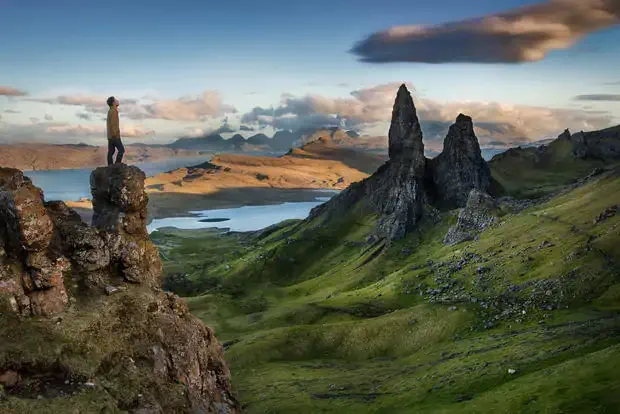There’s no better reminder of nature’s beauty than a place that’s so different, so unique, that it feels like it must be of another planet. These six otherworldly places are guaranteed to revive your appreciation for our planet’s diversity and splendour. (Our epic featured image is courtesy of NASA)
Devils Postpile – California, USA
Though it’s far from the only instance of what geologists would term “columnar jointed volcanics” (Northern Ireland’s Giant’s Causeway is a famous example), the Devils Postpile is undoubtedly one of the most handsome.
This 100,000-year-old lava flow isn’t epic just for its looks – the sheer wall of columns is 60 feet high.
Carlsbad Caverns – New Mexico, USA
The more than 100 caves here are outstanding not only for their size but also for the intricacy of their karst formations.
Fly Ranch Geyser – Nevada, USA
While drilling for water in 1916, the owners of a private ranch in the middle of Nevada’s Hualapai Valley unwittingly set in motion a sequence of events that led to this magnificent feature.
The construction of their water well effectively broke the seal on a pocket of geothermal water. By the 1960s, water began escaping to the surface, carrying copious amounts of minerals with it. What you see today is the build up of over half a century’s worth of these multi-coloured geothermal deposits.
“Blood Falls” – Taylor Glacier, Antarctica
Extremely low humidity, freezing temperatures and thundering winds all help make The McMurdo Dry Valleys in eastern Antarctica one of the most inhospitable spots on the planet.
Yet, despite such harsh conditions, an ecosystem of microbes thrives beneath the Taylor Glacier. No one would know it, were it not for this iron-rich primordial ooze sliding out and over the edge of the glacier’s five-storey high face.
Mud Volcanoes – Caspian Sea, Azerbaijan
It’s estimated that there are 400 mud volcanoes along Azerbaijan’s Caspian Sea and Black Sea coastlines. They exist thanks to a relatively rare coincidence of high tectonic activity occurring beneath heavy sedimentary deposits.
The vast majority of them tamely bubble methane into the atmosphere, but there have been instances of dramatic fireball explosions.
Cueva de los Cristales (Cave of the Crystals) – Naica, Mexico
This underground cave, discovered inadvertently by miners working in nearby Naica, contains some of the largest natural crystals ever discovered.
It’s situated 980-feet beneath the surface, but that’s not the main reason why it remains relatively unexplored – temperatures in the chamber reach up to 58°C (136°F), while the humidity never drops below 90 per cent.
Written by insider city guide series Hg2 | A Hedonist’s guide to…



